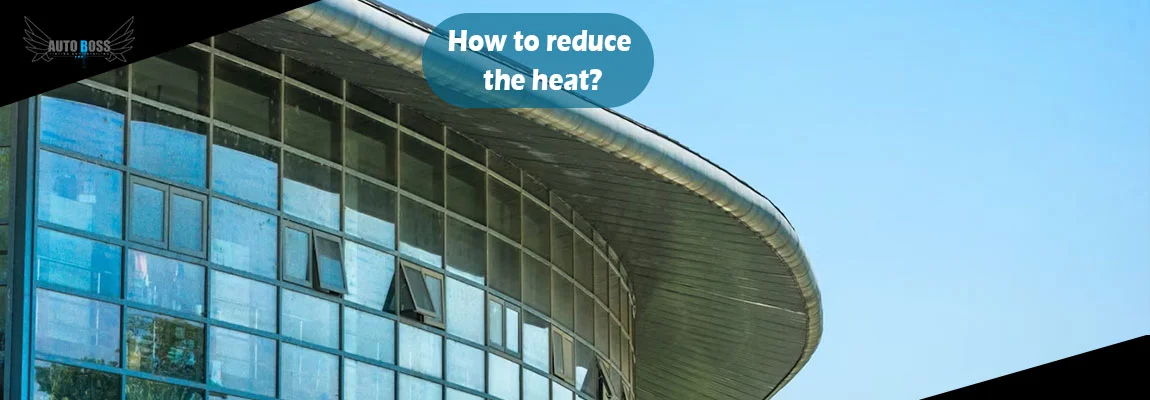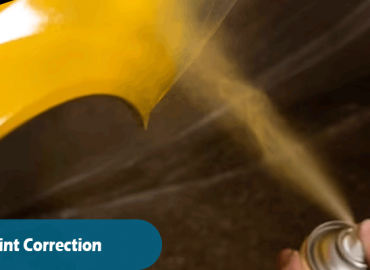Because every person knows that the summers can be sweltering and if you sit in the sunlight for more than an hour, you might get a stroke. And also, there are better solutions than turning on the AC, which could be challenging as it can increase the utility bills.
The solution to this problem must be window tints, and often some people ask if window tinting decreases the heat in the buildings; the answer is yes!
Here, I will tell you everything you must know about how window tinting can reduce the temperature inside your office.
How Does Window Tinting Reduce Heat?
The material used in tints is mainly polyester, which protects the building’s interior from the harmful rays of sunlight. Many other pigments are made up of colored dye and metal fragments, which helps maintain the quality of the films. The films block thermal, ultraviolet, and infrared rays, causing some light to pass through and preventing harm to the interior. The significant disease, skin cancer, is also caused by harmful UV rays, but window tints block 80% of UV rays and provide you with safe travel.
Window tints also have nano-carbon ceramic features, suitable for absorbing UV radiation and heat.
The Mechanics of window tinting
Window tinting is a thin layer of film applied to the building windows. Window tinting is used to reduce. It is important to note that it is the basis of heat transfer. There are three essential modes of heat transfer:
- Conduction
- Convection
- Radiation.
Infrared heat and solar radiation
Solar resources are the most important sources of heat gain. The sun’s heat emits infrared rays of different wavelength spectrums, including UV, visible, and infrared rays. In comparison, UV rays are harmful to your skin and interior.
Window tinting technologies and materials
Many types of window tint technology and materials are designed to provide different levels of UV protection, heat rejection, and privacy.
Benefits of window tinting
Besides the benefits of heat reduction, it provides numerous benefits, including:
UV protection: Protects your skin and eyes from harmful ultraviolet and harmful rays and the interior from cracking and fading.
Privacy: window tinting films make it difficult for people to see inside the building.
Improved safety: Window tinting films can reduce the likelihood of shattering glass, and they reduce the injury risk.
Energy efficiency: reducing heat gain reduces the strain on air conditioning.
Aesthetic appeal: Window tinting films can enhance the building’s look.
Window Tints Reducing Heat
Window tints are a barrier between the office interior and harmful rays from the sun. It decreases glare and prevents the building from heating.
Window tints vary between the types you want. Like everyday window tints, reduce the heat by 35 to 45 percent. More premium tints can give 80 percent of heat rejection.
If you want the best heat reduction, ceramic films are your choice because they absorb infrared light, which is the main reason for heating.
How Could I Choose The Best Tint For Heat Reduction?
There are different absorption levels of the films, which you can tell from a distance, VLT%, VLR%, VLA%. The VLT means how much light is transmitted through, The VLR shows how much is reflected, and the last VLA shows how much the tint absorbs.
The building window will transmit about 90% of the sun’s visible light. And because of this, its VLT% will be 90. The same non-tinted windows will have a VLA% and a VLR% of five.
Why Should You Get Window Tints to Reduce the Heat?
A hot interior isn’t just uncomfortable and can also be hazardous to your health. Excessive temperatures inside your building can cause heat stroke and dehydration and release harmful toxins found in many plastic components and furniture.
Conclusion
The window tinting films reduce the heat by rejecting heat and sunlight. Auto boss Vaughan helps get the best window tinting installation and provides you with the best services.
FAQs
How do window tints keep the heat out?
Metalized window tinting helps reduce heat because it reflects sunlight and heat away from your building. Tiny metallic particles are embedded into the film and create an invisible film.
Does 70% window tinting reduce heat?
70% window tinting reduces the heat inside the office as it reduces the temperature and glare.
Can factory tinting help reduce heat?
Factory-tinted glass is an excellent heat-reducing option because it can help keep your building cool and reduce heat gain.
Which tint is better for reducing heat?
Metalized or carbon films can achieve maximum heat reduction and UV rays protection. However, the budget-friendly options are dyed films.




